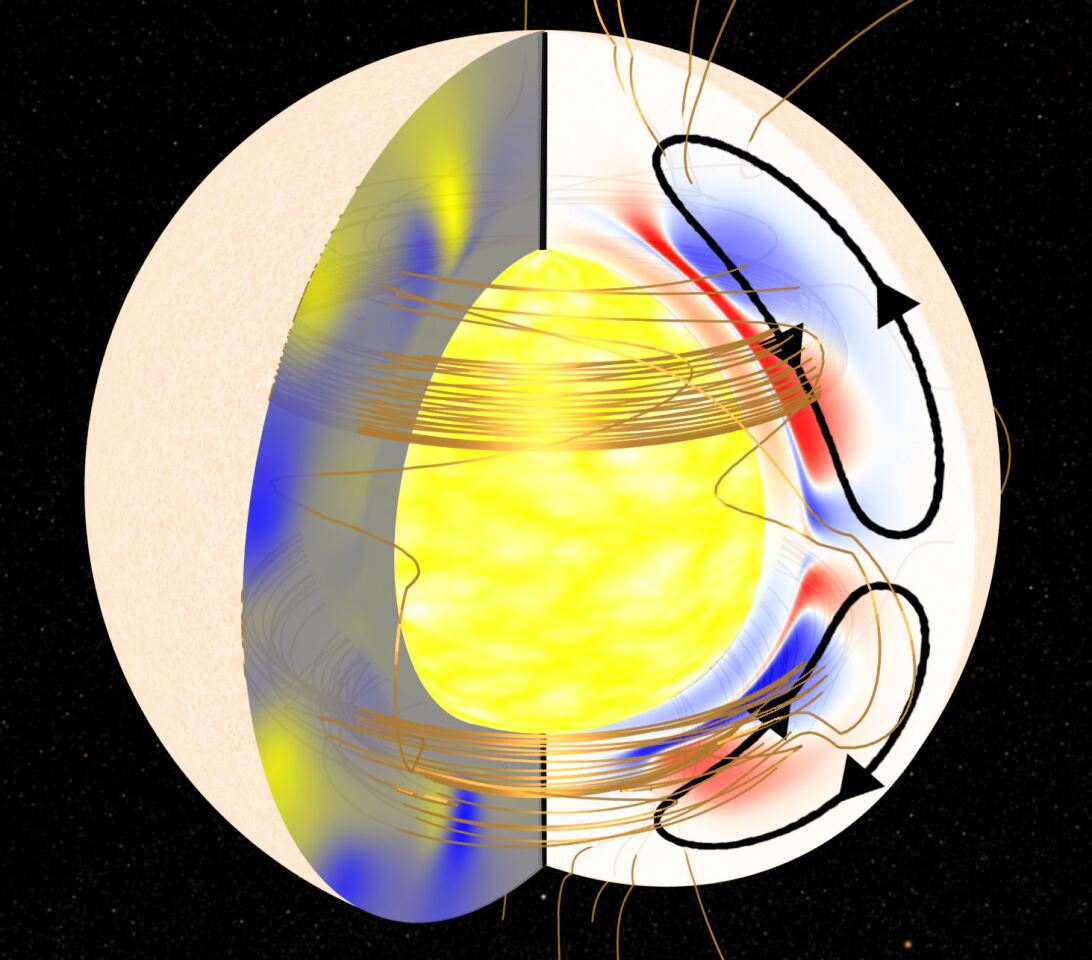Direct observation of sunspots has, more or less, been going on continuously since they were first observed in the seventeenth century. So, you can imagine the puzzled expressions on the faces of astronomers the world over when the phenomena all-but disappeared from view for a couple of years recently. Now, research sponsored by NASA and the government of India has produced the first computer model that explains the prolonged cyclic minima during 2008 - 2009. The simulations suggest that plasma currents deep inside the sun interfered with the formation of sunspots.
It was the lowest sunspot activity in almost 100 years, and caused the weakening of the sun's magnetic field which led to cosmic rays being allowed to penetrate our solar system in record numbers. It also caused the Earth's upper atmosphere to cool and collapse, and led to a halt in the decay and subsequent buildup of space debris surrounding our planet. However, one good thing to come from this extended period of sunspot inactivity was the determined efforts of scientists to better understand the solar cycle.
Although actual numbers of sunspots can vary considerably, their rise and fall does appear to follow a regular repeating cycle over about 11 years. The dark areas seen on the surface of the sun are the result of intense magnetic activity, and are so colored due to reduced temperature. As sunspots begin to decay, their magnetic remains are pulled down inside the star by a vast system of looping plasma currents called meridional flows. The magnetic fields then get re-animated and become buoyant enough to return to the surface to start the next solar cycle.

It was during cycle 23 that an extended period of sunspot inactivity was observed. Solar physicists have developed a computer model which shows that this time the fast-moving meridional flows dragged the sunspot corpses down into the belly of the sun too quickly for full re-animation to occur. By the time the plasma flows slowed down, the damage was already done and new sunspots were in short supply.
"The stage was set for the deepest solar minimum in a century," said co-author Petrus Martens of the Montana State University Department of Physics.
The new model has been hailed as a significant advance, Lika Guhathakurta of NASA's Heliophysics Division in Washington saying: "Understanding and predicting solar minimum is something we've never been able to do before – and it turns out to be very important."
Strange things tend to happen during long periods of sunspot minima, such as Europe's little ice age that coincided with the Maunder Minimum of 1645 - 1715. NASA reports that this most recent sunspotless period saw a weakening of the sun's global magnetic field and a lessening of the solar wind. "Cosmic rays normally held at bay by the sun's windy magnetism surged into the inner solar system," the agency stated. "During the deepest solar minimum in a century, ironically, space became a more dangerous place to travel. At the same time, the heating action of UV rays normally provided by sunspots was absent, so Earth's upper atmosphere began to cool and collapse. Space junk stopped decaying as rapidly as usual and started accumulating in Earth orbit. And so on…."

With the computer model now developed, the next step is for NASA's Solar Dynamics Observatory to measure the motions of the meridional flows, and then feed the data into the model so that researchers might accurately predict the appearance of future solar minima.
The results of the research – which was funded by NASA's Living With a Star Program and the Department of Science and Technology of the Government of India – were recently published in the journal Nature in a paper entitled The unusual minimum of sunspot cycle 23 caused by meridional plasma flow variations by Dibyendu Nandy, Andrés Muñoz-Jaramillo, and Petrus C. H. Martens.






